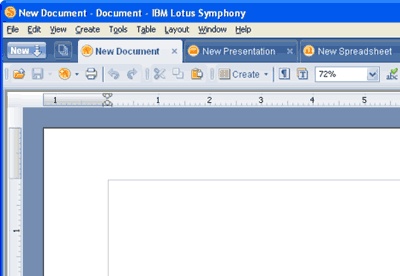

Hooks inside the software help developers write applications for the Symphony environment. Lotus designed Symphony for access by other programmers. You can still access the Sheet menu with the slash, but in other environments you must use F10. The F10, or menu, key displays different choices with each environment. The F9, or SERVICES, key displays choices such as Print, Window, and File in all environments. To help, Symphony uses function keys extensively. This software is more powerful than 1-2-3 and therefore has more commands. Data management is really possible to use, and the macro programming language is greatly enhanced. The graphy and spreadsheet functions have been expanded over 1-2-3. There are data communications upload/download/capture capabilities. The word processor has a few cumbersome features, but it is all the word processor many people will ever need. Symphony supports virtually unlimited windows. The Row/Column structure is there, to one degree or another, regardless of which environment you are using. While different envirnments display information in slightly different ways, Symphony is always basically a spreadsheet. To change environments, press the TYPE key (alt/F10) and select one from the environment menu. Lotus calls each major program function an "environment," a way of handling the information stored in any Symphony file in different ways. Careful memory management and space allocation are necessary with this package. Reality-given present hardware limitations-is much less. In theory the software provides a workspace of 8192 rows by 256 columns. Still, this falls far short of what Lotus advertises for Symphony: 2,097,152 cells or about 18.8 million characters. You could write a document of about 45 single-spaced pages or construct a typical name and address file with around 1000 records.
#Lotus symphony Pc
A 512K PC AT or Compaq will allow you to fill about 13 thousand cells (more than 116,000 characters). Indeed, with any system, this is a hungry package. With the minimum RAM you can load the program and use all of teh softwareįeatures, but the amount of data you can manipulate is reduced. Lotus recommends a minimum of 320K of memory to use Symphony, but a more practical configuration would include 512K. The differences is that 1-2-3 requires about 128K of system RAM for program instructions while Symphony uses twice as much. Then, unless you need to print graphs or use some of the other arcane functions, no further program loading is necessary.

Like its predecessor, Symphony is loaded once into memory.
#Lotus symphony registration
The function key template that comes with the package won't fit the Compaq keyboard, but Lotus will supply one that will, when they receive your registration card. Symphony runs well, though at somewhat reduced speed, on the IBM PCjr with additional memory.īefore you purchase Symphony, check with Lotus or your dealer to make sure it will run satifactorily on your machine. It is marketed for the IBM PC and Compaq, though it will run on many PC compatible machines, and there is a plethora of custom versions. Symphony is an "integrated" package that includes a spreadsheet, word processor, data manager, graphics generator, and communications services. So much of the personality of 1-2-3 is evident in Symphony that it is impossible to ignore the similarities. Lotus Symphony a full-blown big brother for 1-2-3.Ī software "sequel," such as Symphony from Lotus Developemtn Corporation, producer of 1-2-3, begs comparison.


 0 kommentar(er)
0 kommentar(er)
